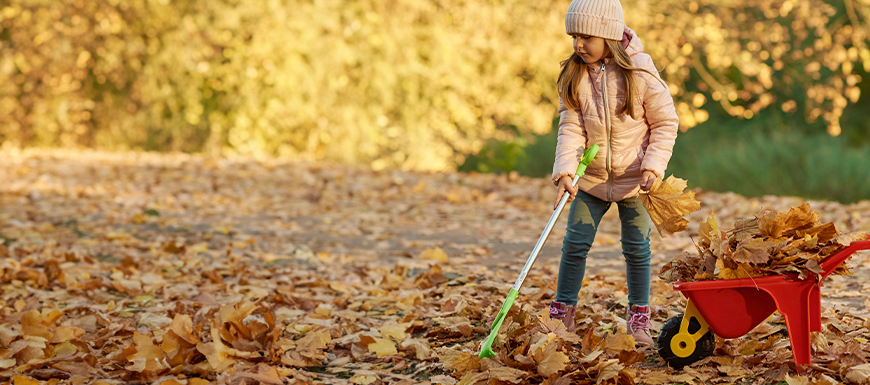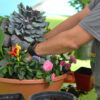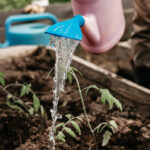It’s time for garden enthusiasts to shift their focus towards fall preparations. This season offers the opportunity to nurture your outdoor space, ensuring it remains healthy and beautiful throughout the colder months and into the next year. Our experts have compiled their best tips for your lawn, garden, and perennials to help you create a vibrant and thriving autumn landscape.
Lawns
- Fall is a great time to aerate your lawn. Aeration loosens the soil of compaction and supplies important oxygen to the soil and roots. Aerating your lawn can also help decrease the thatch layer in your lawn.
- in mid-October, apply Fertilome Winterizer Fertilizer. This application should be watered into the soil profile.
- As the time approaches to mow your lawn for the last time, mowing heights should be reduced throughout the fall. The last mowing should be down at the lowest setting. Short lawn heights will allow proper air movement and prevent the matting of the grass.
- Remove leaves from your lawn to prevent the lawn from becoming smothered by the leaves.
Garden
- Remove all debris from the garden. Leaving debris will increase your chances of diseases and insects attacking next year’s plants.
- Amend your soil with cotton bur or a composted manure mix. Your soil should have adequate organic matter incorporated into it. Till it into the top 6-10 inches of topsoil.
Perennials
As we receive killing frosts (28 degrees and lower), perennials will start to go into dormancy, leaving brown plants. As your plants turn brown, many can be cut down, leaving just a little stem. You can also leave them until spring to provide insulation during the winter. Grasses should always be left until spring to trim down; the tall foliage will add to your winter landscape. If you cut your perennials back for the winter, spread a mulch layer (shredded decomposed wood) for extra insulation over the root zone. Spread Fertilome Winterizer Fertilizer in your perennial beds to give plants a boost in the spring. Perennials such as Heuchera, Tiarella, Spurge, and Creeping Phlox should not be cut down in the fall but lightly trimmed in the spring.
It is also finally time to plant fall bulbs. Fall bulbs include tulips, daffodils, allium, crocus, and hyacinth (to name a few). Most bulbs (except the crocus) should be planted at least 6 inches deep from the tip of the bulb. When digging your holes, place a mixture of bone meal or Dutch bulb food and sand at the bottom of the hole. The sand will help drain water away from the bulb, and the bone meal will provide phosphorus, which is important for root and bulb development. Bulbs should not be planted until after the first hard freeze, and when temperatures are consistently in the low 60s or lower.



